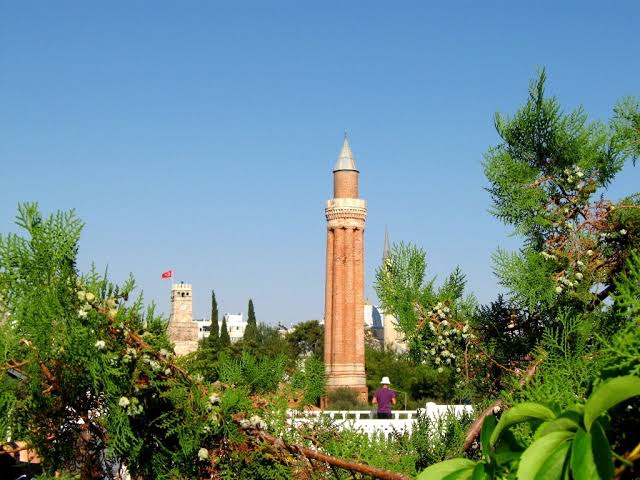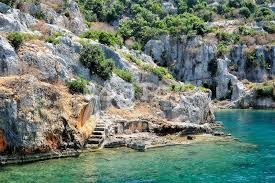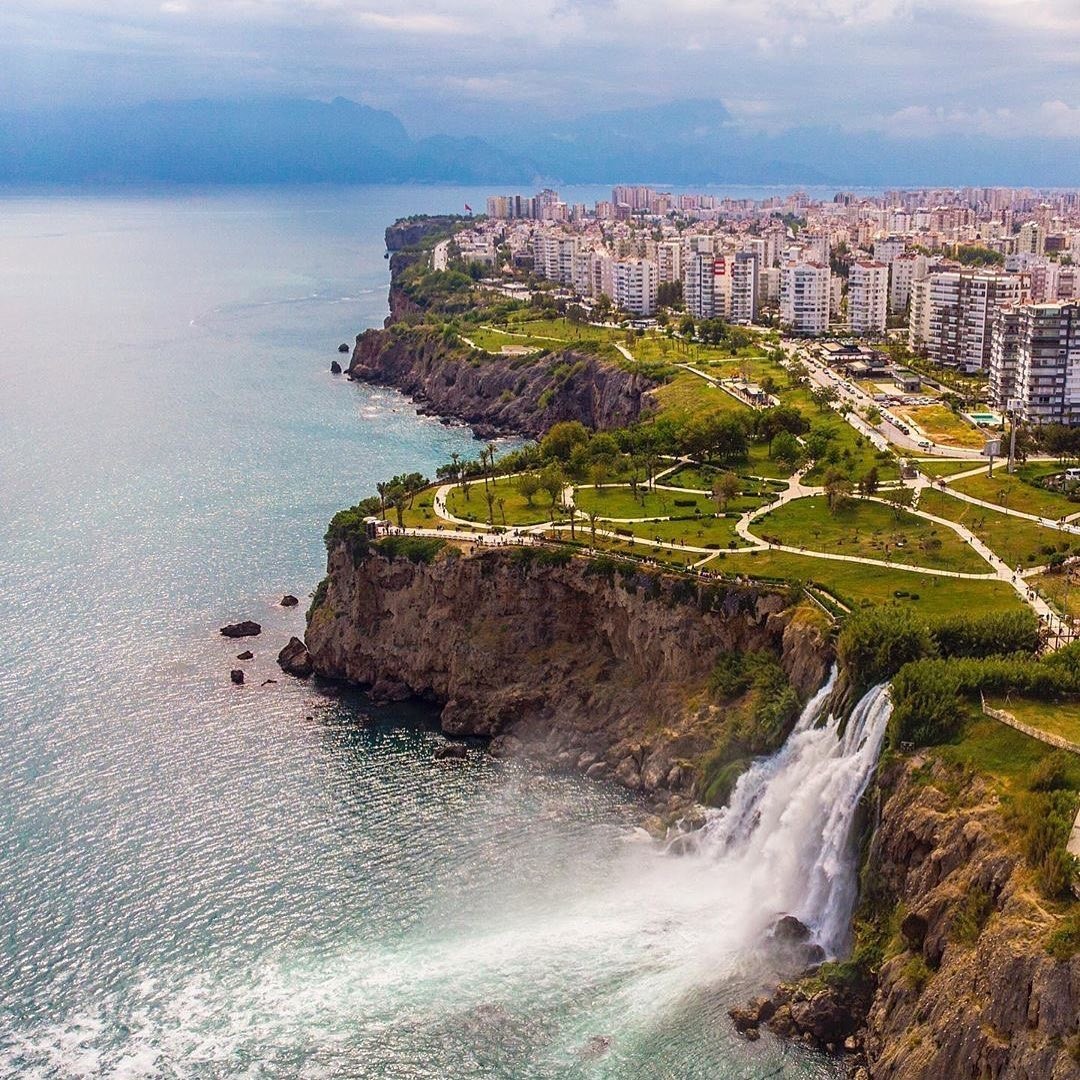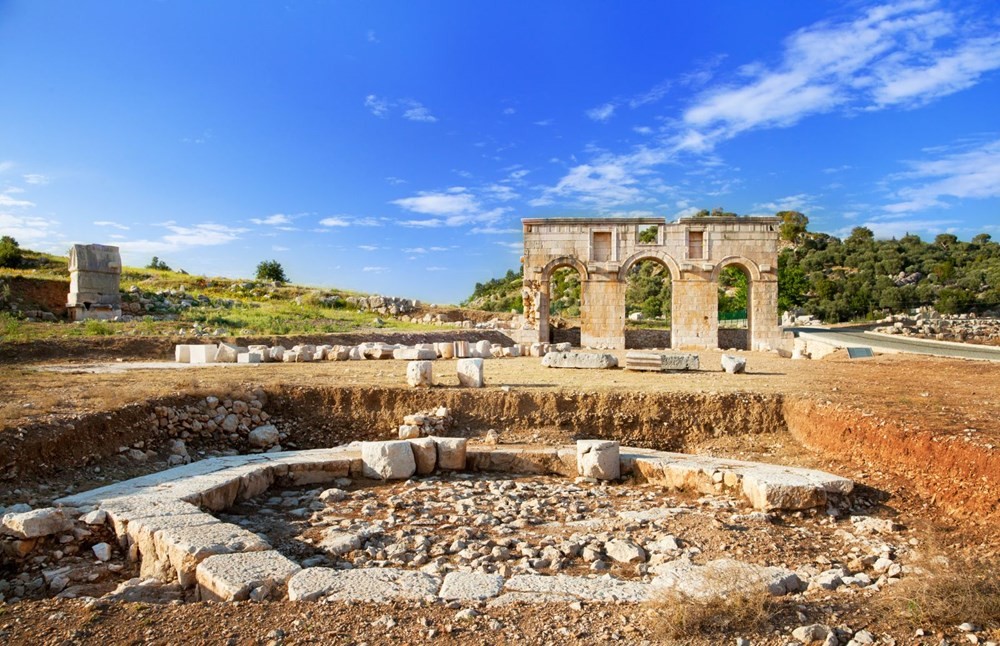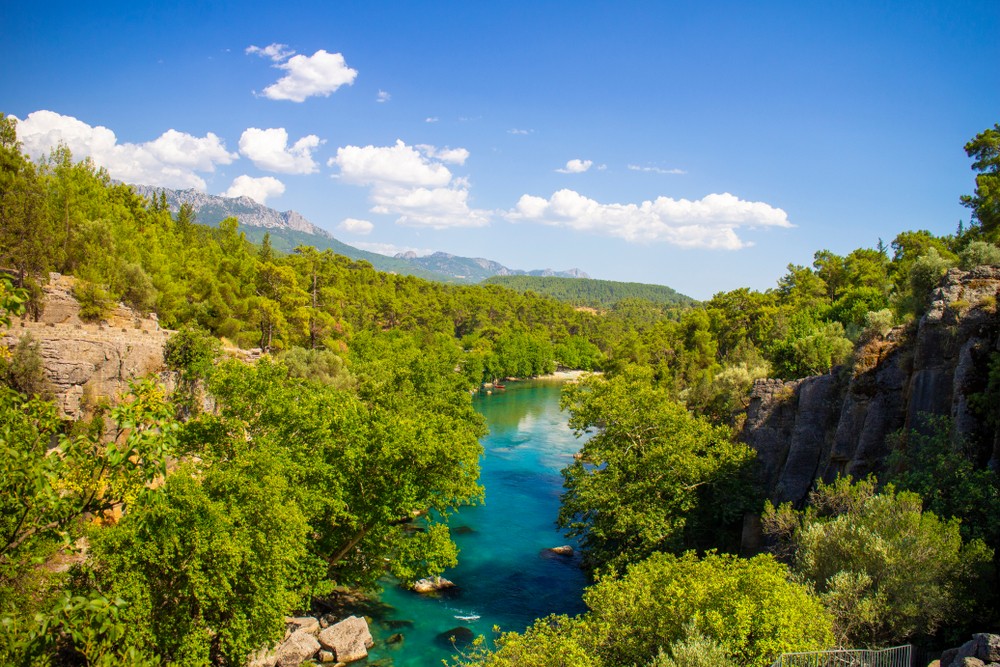This handsome and distinctive 'fluted' minaret, erected by Seljuk Sultan Aladdin Keykubad I in the early 13th century, is Antalya's symbol. The adjacent mosque (1373) is still in use.
Yivliminare Mosque
Gallery03 February 2020History
Yivli Minaret Mosque is located in Kaleiçi (the old town centre) along Cumhuriyet Street, next to Kalekapısı Square in Antalya. The mosque’s fluted minaret named “the Yivli Minaret”, which is decorated with dark blue tiles, is a landmark and symbol of the city. Although the inscription at the entrance indicates that Yivli Minaret Mosque was built in 1373 by Mehmet Bey, grandson of Yunus Bey from the Hamitoglu clan. The original mosque was built in 1230 by using the walls of a ruined old church which was exist formerly at the same place.
The original mosque destroyed in the 14th century and the prayer hall was rebuilt with its six domes. Domes attract attention with their exterior tiles. This building is one of the oldest examples of multi-domed mosques in Anatolia. The mosque’s plan scheme is rectangular and the building has plain decoration style. The roof is carried by 12 columns which have ancient column heads. The exterior walls of the mosque are constructed by hewn stone.
The mosque is famous for its minaret which was constructed on the orders of Alaaddin Keykubad I, the Seljuks Sultan who ruled between 1220 and 1237. The 38-metre high fluted minaret is a unique example of Anatolian Turkish Architecture. It stands on a huge square stone base measuring 6.5 metres tall and 5.5 metres wide. The Minaret’s eight semi-circular grooved red brick shaft was originally decorated with dark blue and turquoise-colored tiles.
Unique architectural design
Yivli Minaret Mosque represents unique architectural design with its fluted minaret. It is possible to compare with other similar minarets in Anatolia such as the minaret of the Afyon Gedik Ahmet Paşa Mosque, Amasya Burmalı Minaret Mosque, Tire Karahasan Mosque and one of the minarets of Edirne Üç Şerefeli Mosque. But Yivli Minaret Mosque distinguishes from them with its minaret’s unprecedented form and design.
The minaret was restored in 1953 and 1961 by General Directorate of Cultural Heritage and Museums. Its spire was renewed in 1973 by Directorate General of Foundations.
